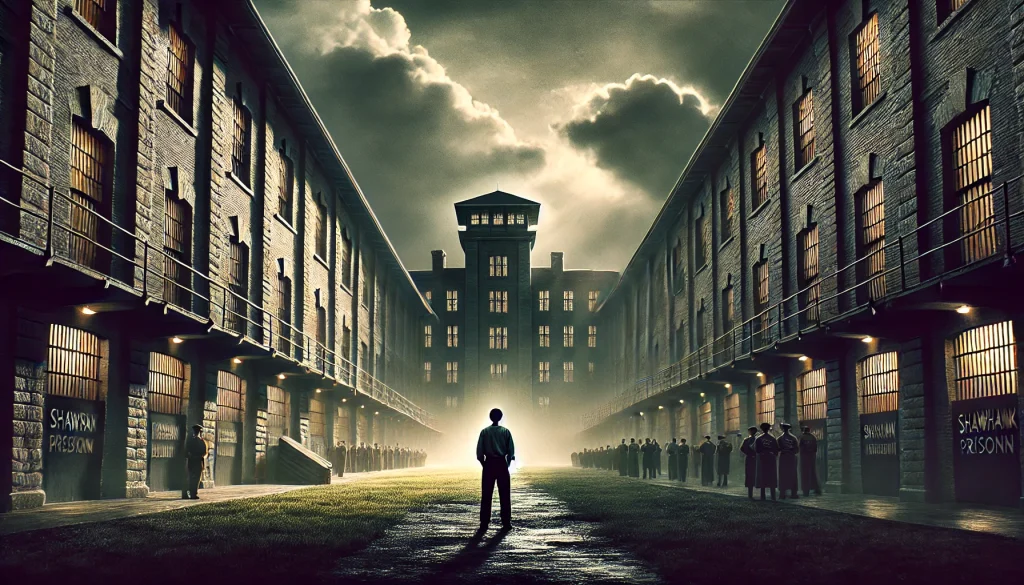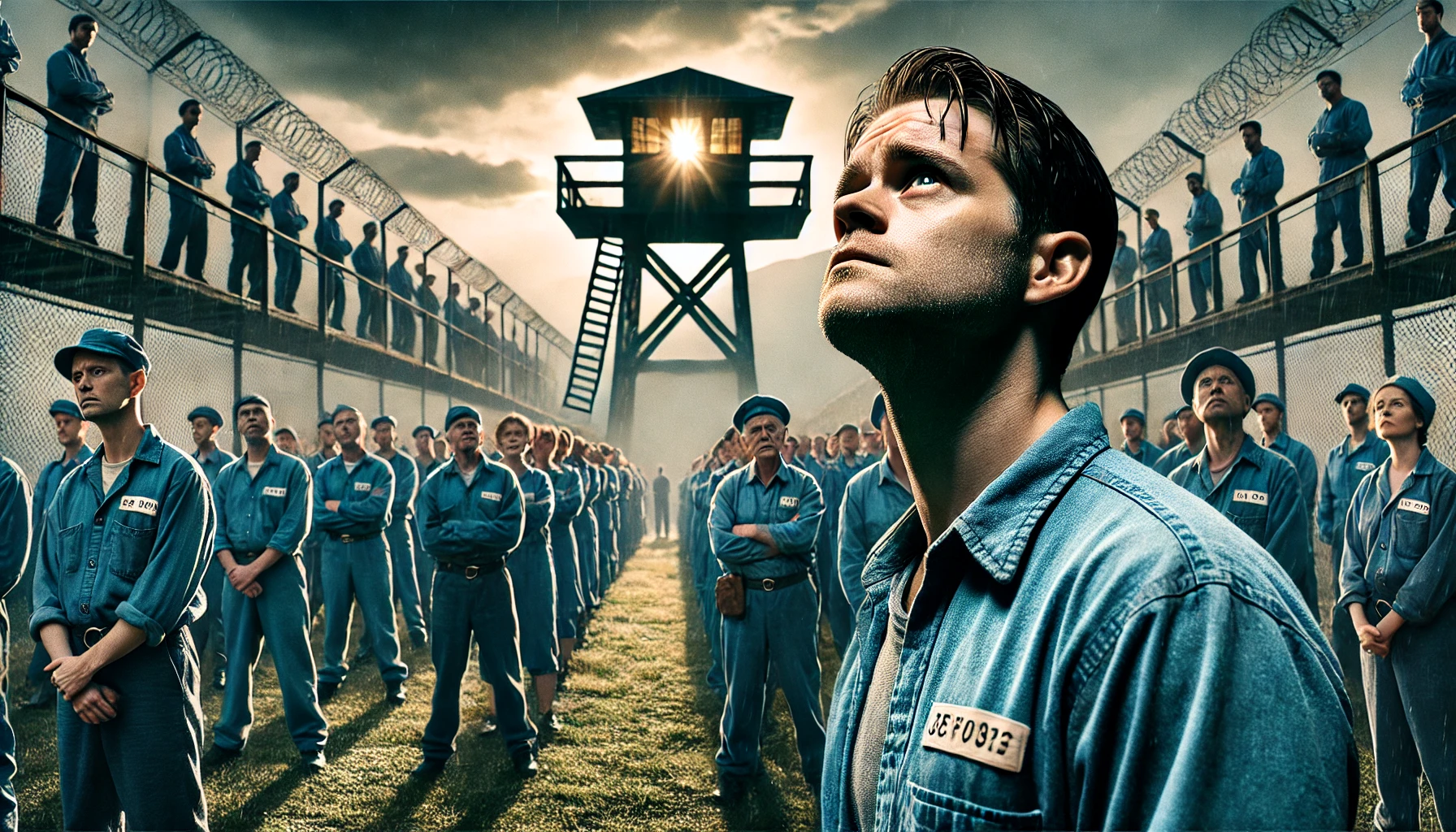A masterpiece that transcends the prison drama genre to deliver one of cinema’s most powerful explorations of the human spirit.
Release Date: September 23, 1994
Director: Frank Darabont
Cast: Tim Robbins, Morgan Freeman, Bob Gunton, William Sadler, Clancy Brown
Rating: 5/5 Stars
Runtime: 142 minutes
Introduction: Why “The Shawshank Redemption” Remains Unrivaled
Frank Darabont’s “The Shawshank Redemption” may not have dominated the box office upon its initial release in 1994, but it has since claimed its rightful place as one of the most beloved films in cinematic history. Based on Stephen King’s novella “Rita Hayworth and Shawshank Redemption,” this prison drama transcends its genre constraints to deliver a profound meditation on hope, friendship, and the resilience of the human spirit.
Plot: A Journey Through Walls Both Physical and Metaphorical
The story follows Andy Dufresne (Tim Robbins), a successful banker who is wrongfully convicted of murdering his wife and her lover. Sentenced to two consecutive life terms at Shawshank State Penitentiary, Andy encounters Ellis “Red” Redding (Morgan Freeman), a fellow inmate and prison contraband smuggler who becomes his closest friend.
Over the course of nearly two decades, we witness Andy’s extraordinary journey as he navigates the brutal realities of prison life, including corrupt officials, violent inmates, and the crushing weight of institutionalization. Yet throughout his ordeal, Andy maintains an unwavering inner strength and quiet determination that ultimately leads to one of cinema’s most satisfying conclusions.
Performance Analysis: Acting That Defines Careers

Tim Robbins delivers a masterclass in restrained performance as Andy Dufresne. His portrayal of a man who refuses to let his spirit be broken despite overwhelming adversity creates a character of remarkable depth. The genius of Robbins’ performance lies in what he doesn’t show – the calculated intelligence and patience that simmer beneath his composed exterior.
Morgan Freeman’s portrayal of Red isn’t just iconic – it’s definitive. His world-weary wisdom and distinctive narration provide the emotional backbone of the film. Freeman transforms what could have been a simple supporting character into an essential perspective through which we experience the story. His line, “Hope is a dangerous thing. Hope can drive a man insane,” becomes all the more powerful when his character’s journey ultimately leads him to embrace that very hope.
The supporting cast delivers equally impressive performances, particularly Bob Gunton as the manipulative Warden Norton, whose facade of religious righteousness masks profound corruption.
Visual Storytelling: The Cinematic Language of Confinement and Freedom
Cinematographer Roger Deakins creates a visual language that evolves throughout the film. The early scenes are characterized by oppressive framing, cold colors, and harsh lighting that emphasize the claustrophobic nature of prison life. As the narrative progresses, subtle shifts in the visual palette mirror Andy’s internal journey, culminating in the film’s rain-soaked climax – a sequence of profound catharsis and liberation.
Darabont’s direction demonstrates remarkable restraint, allowing scenes to breathe and characters to develop organically. The film’s deliberate pacing might seem at odds with modern filmmaking conventions, but it serves a crucial purpose: immersing viewers in the slow passage of time that defines prison life.
Thematic Richness: Beyond Prison Walls
While ostensibly a prison drama, “The Shawshank Redemption” explores themes that resonate far beyond its setting:
Institutionalization: Through the character of Brooks (James Whitmore), an elderly inmate who finds himself unable to adapt to life outside prison, the film offers a haunting exploration of how institutions can strip individuals of their identity and purpose.
Corruption: The film depicts a system where those entrusted with power – particularly Warden Norton – abuse it for personal gain, creating a microcosm that reflects broader societal corruption.
Friendship: The bond between Andy and Red stands as one of cinema’s most authentic portrayals of male friendship – a relationship built on mutual respect, understanding, and eventually, hope.
Redemption: The film’s title speaks to its central theme – that even in the most desperate circumstances, redemption is possible. This applies not only to Andy’s legal vindication but to the spiritual redemption that both he and Red experience.
Cultural Impact: From Box Office Disappointment to Beloved Classic
Despite its initial commercial disappointment, “The Shawshank Redemption” found new life through home video releases and television broadcasts. Its consistent presence at the top of IMDB’s user-rated films (frequently competing with “The Godfather” for the #1 spot) testifies to its enduring appeal and the deep emotional connection it establishes with viewers.
The film’s quotes have entered the cultural lexicon, with lines like “Get busy living or get busy dying” and “Hope is a good thing, maybe the best of things, and no good thing ever dies” resonating with audiences worldwide.
Why This Film Endures: The Power of Hope

What ultimately elevates “The Shawshank Redemption” beyond excellent filmmaking is its unwavering belief in the power of hope. In an era of increasingly cynical storytelling, Darabont’s film stands as a testament to the idea that hope, patience, and friendship can overcome even the most dire circumstances.
The film’s final sequence – as Red journeys to reunite with Andy on a sun-drenched beach in Zihuatanejo – represents one of cinema’s most emotionally satisfying conclusions. It’s a moment that continues to move viewers to tears nearly three decades after the film’s release.
Conclusion: A Cinematic Treasure That Rewards Repeated Viewing
“The Shawshank Redemption” isn’t just a great film – it’s a profound experience that reveals new layers with each viewing. Its exceptional screenplay, nuanced performances, and timeless themes ensure that it will continue to captivate generations of viewers.
For those who haven’t experienced it, your first viewing awaits – a journey through darkness into light that exemplifies cinema at its most powerful and transformative. For those returning to Shawshank, the film continues to offer comfort and inspiration, reminding us that, as Andy wrote to Red, “Hope is a good thing, maybe the best of things, and no good thing ever dies.”
Did You Know?
- The movie was filmed at the Ohio State Reformatory, a retired prison in Mansfield, Ohio
- The role of Red was written for a red-headed Irishman in King’s novella
- The film was nominated for seven Academy Awards but won none, competing against “Forrest Gump” and “Pulp Fiction”
- The oak tree where Red finds Andy’s letter became a popular tourist destination until it was partially destroyed by lightning in 2011
Where to Watch: Available on Netflix, HBO Max, and for rental on Amazon Prime Video and Apple TV.
If You Enjoyed “The Shawshank Redemption,” You Might Also Like:
- “The Green Mile” (1999) – Another Stephen King prison drama directed by Frank Darabont
- “One Flew Over the Cuckoo’s Nest” (1975) – A classic examination of institutional power
- “Cool Hand Luke” (1967) – Paul Newman’s iconic prison drama about resilience
- “Escape from Alcatraz” (1979) – Clint Eastwood’s tense prison escape thriller

3 thoughts on “The Shawshank Redemption (1994): A Timeless Tale of Hope and Redemption”